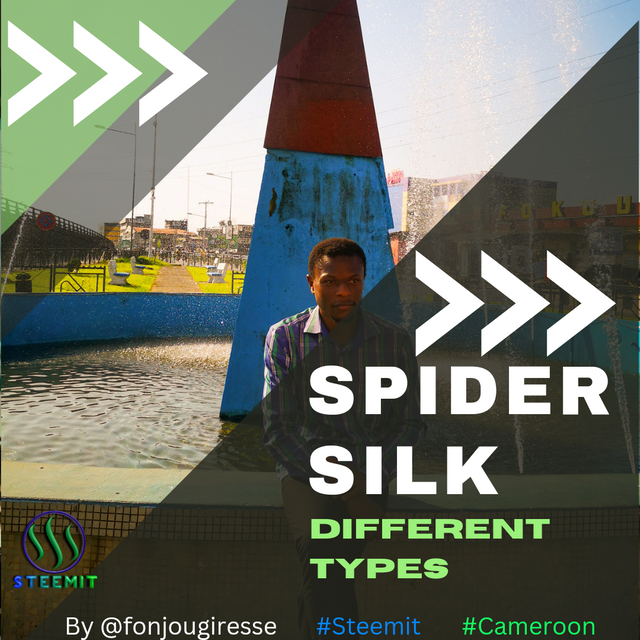The Spider Silk; Different Types
Hello everyone hope you are all doing well. It is a pleasure writing to you this morning. We are going on continue on spider silk. On our last post which was a brief introduction we are going to continue itj the different types of spider silk and their properties. Here we go.
DIFFERENT TYPES OF SPIDER SILK AND THEIR MECHANICAL PROPERTIES. |
|---|
- Dragline silk: It is the most studied silk with remarkable mechanical properties. Dragline silk is a very strong, extremely tough and elastic fiber spun by major ampullate glands and used by spiders to form their safety line (It also forms the basic framework and backbone for most of the webs). This gland has two main parts; a long tail and a wider sac area. Many scientists have tried to expose the chemistry of dragline silk.
The studies reveal that the dragline silk consist of four layers including the inner core, skin and the outer glycoprotein and lipid layer. Dragline silk is a complex material mainly made up of two constituent proteins named as MaSp1 and MaSp2, some other molecules present in living organisms like glycoprotein and lipids.
Three to five (3-5) disulfide bonds near their carbonyl-termini are responsible for connection of these two proteins.
- Capture silk: Spiral capture silk is an elastic and sticky fiber produced by the flagelliform gland. Itis placed in orb webs to absorb and waste large amounts of mechanical energy introduced during the collision of aerial insects.
- Glue-like silk: Glue-like silk produced by Aggregate gland functions in attachment and prey capture.
- Cocoon silk: Cocoon silk produced by cylindrical gland is utilized in reproduction and egg casing.
- Wrapping silk: Wrapping silk produced by Aciniform gland aids in wrapping of captured prey
- Aciniform silk: aciniform silks are hardest spider silk type that help spiders to immobilize their prey
Egg case silk: Aciniform silks are also constituents of egg case silk of spiders. - Flagelliform silk: Flagelliform silks mainly present in orb weavers, have maximum mechanical strength form spiral capture silk
Hello @adylinah please come and share your impressions with me.
Regards
@fonjougiresse

Thank you, friend!


I'm @steem.history, who is steem witness.
Thank you for witnessvoting for me.
please click it!
(Go to https://steemit.com/~witnesses and type fbslo at the bottom of the page)
The weight is reduced because of the lack of Voting Power. If you vote for me as a witness, you can get my little vote.
Just like the disulfide bonds found in our hair stricture in combination with the keratin protein, giving it its rigidity.
It's so amazing how insects are so independent and endowed with all they need and most importantly, the know how to make use of these endowments. If only mankind could understand the richness of what we posses as humans, we will be seriously bent exploiting them rather that fighting wars.
Nice write-up.
Ohhhhh i am happy to see a person understanding my post. Most of the time, people just passe throughit. Thanks for the comment.
Also due to te disulfide binds present in hair, it appears to be curly.
You are welcome
I think your post makes a lot of sense
Thanks